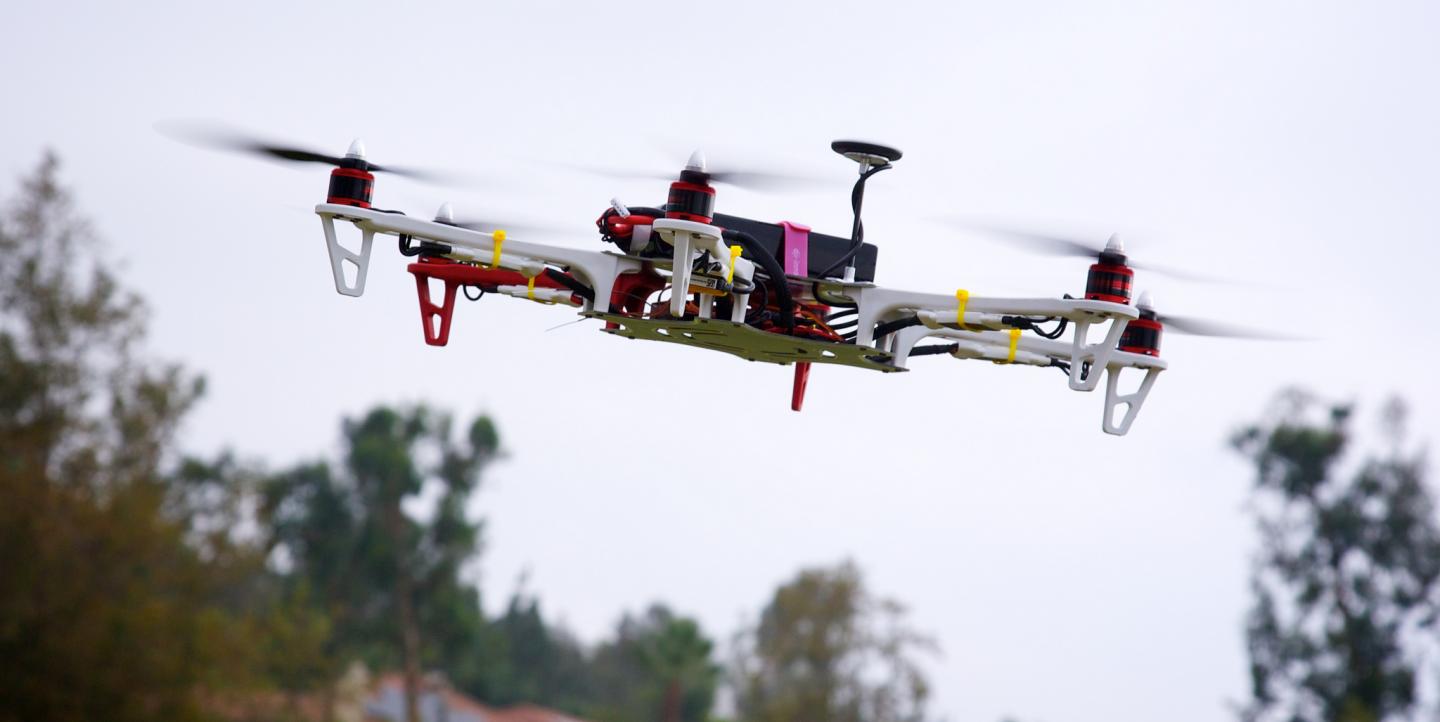If you’re a journalist interested in using a drone to capture video and photos for your reporting, like aerial shots of a protest or natural disaster, Drone Journalism Lab founder Matt Waite has two main tips for you: Be safe and be smart.
Because drone--or unmanned aerial vehicle, UAV--technology is still so new across the world, Waite, who’s also a journalism professor at the University of Nebraska-Lincoln, says it’s an especially delicate time for its use. As lawmakers figure out how to regulate drones, journalists should be cautious.
“We know there’s a legitimate positive use for them,” Waite told IJNet. “The question really is about managing the safety aspects and making sure we’re not wantonly violating privacy. How can we be sure people are flying them safely? Anything that goes wrong now has the potential to set things back years and years for all of us.”
Organizations like the Drone Journalism Lab and the Professional Society of Drone Journalists are working to promote safe and responsible use of drones. They’re up against a cautious regulatory framework in many parts of the world.
Waite says the world can now be divided into three groups of countries when it comes to drone use:
1) The U.S. stands alone in the ban-it-all mentality. As of now, in the U.S. there is limited application for drone use in news, although that may be changing.
2) The next group of countries have rules on the books for commercial use of UAVs, and define journalism as commercial use. This group includes the U.K., Australia, Japan and a “chunk of the Euro zone.”
3) The last group of countries are pretty much unregulated. And there’s a lot of them.
“With such vast differences between countries, an overall set of best practices is hard to do,” Waite said. “But there is an emerging set of ideas.”
He said it’s important, first and foremost, for journalists to deal with local ideas about privacy and press freedom.
“Every country and region has their own ideas of privacy and propriety and what they’re comfortable with and what’s okay,” Waite said. “And every country and region has their own relationship with the government. When you put a flying robot in the sky, there’s going to be a different reaction from people depending on where they are.”
Waite said he often hears from people who are excited about using drones to cover large protests. But the “last thing you want to do,” he said, “is fly over a densely packed crowd.”
"If something goes wrong, there’s nowhere for your device to crash without hurting someone. And if you have no option but to hurt someone in an emergency situation, that’s not a good use.”
Another example he hears often is taking a drone to Syria to show the size of refugee camps. “That would be an amazing application,” Waite said. “The problem is you have a group of people there who are already traumatized, who are going to be really uncomfortable with a flying robot with a camera on it. You could cause a mass panic that way.”
The bottom line: Flying a drone is a provocative act. It will likely make people uncomfortable until they’re more accustomed to them being around.
It may sound obvious, but it's very important to be sure you know how to properly fly the drone. Learning to fly in open spaces and simple environments, for instance to cover agriculture or a rural area, can be learned quickly, Waite said--in a day or two. The issues there mainly involve getting accustomed to the controls, the spatial orientation and battery management.
But the minute you introduce trees, power lines, roads with traffic, buildings and any sort of urban environment, you have to be more careful. “If you’re the pilot in command, you’re responsible for the safety of everyone around you,” he said. “If you’re not prepared to take that on, you have no business flying that device.”
Detroit Free Press photojournalist Eric Seals recently told Poynter that it takes “a good month, even two months” to get skilled at operating a drone. “You have to develop a mental checklist to check out the gear, make sure you are below 400 feet and not too close to an airport. You have to know about wind conditions. It is not a toy and people who got them at Christmas have to realize that. A lot of people who got them and started flying them without any practice find the aircraft flies away. If you do not calibrate the aircraft you can lose them in flight and never see them again.”
The Professional Society of Drone Journalists has also adopted a code of ethics. The code says drone operators should live up to traditional journalism ethics codes, including the Society of Professional Journalists’ code of ethics. But there are additional ethics involved with drone photography, regarding newsworthiness, safety, sanctity of law and public spaces and privacy.
“There is a significant portion of me that is really excited about this because it’s cool,” Waite said. “Flying robots with cameras is just awesome.”
But, he said he tempers that with the reality of the technology--that people are uncomfortable with drones and that they introduce safety risks and privacy concerns.
“I’m terrified by the thought of someone going out and doing something stupid with a drone,” he said. “We are one person making a mistake away from this being done. Look out.”
Image courtesy of Flickr user Richard Unten under a Creative Commons license.

